Early Career Scientist Spotlight
Dr. Mike Croteau (he/him)
Satellite Geodesist
Geodesy and Geophysics Laboratory (61A)
What inspired you to pursue a career in satellite geodesy?
Growing up, I always enjoyed aviation and space, and knew that I wanted to work in something related to those areas. An internship one summer showed me that I wasn’t particularly interested in joining a large aerospace firm to work on one small piece of a very large system, and I started to think about graduate school and shifting from a largely aviation focus to space. While the idea of working on a mission to another planet or moon fascinated me, I realized that I was most interested in being part of Earth-focused satellite missions, helping to learn about our planet and solve problems here at home. I had the opportunity to go to CU Boulder to work as part of a group focused on time-variable gravity and sea level rise, and I learned just how interesting and challenging that work could be – especially the computational and estimation work involved – and how that work added a key piece to the larger puzzle of understanding and combating climate change. While in Boulder, I linked up with the group here in the Geodesy and Geophysics Laboratory (Code 61A) at NASA Goddard and have been involved ever since.
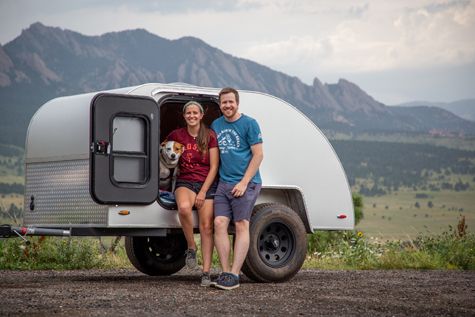
Credit: John Fullard
What science questions do you investigate?
Through this part of my career, I’ve focused quite a bit on improving our rigorous estimation techniques and strategies for recovering terrestrial water storage changes from the Gravity Recovery and Climate Experiment (GRACE) and GRACE Follow-On (GRACE-FO) gravity data. I’ve spent quite a bit of time working to quantify the expected spatio-temporal information that can be observed with those satellites, pushing the limits of what we can recover. More recently, I’ve focused on improvements to the techniques scientists use for recovering terrestrial water storage from gravity data, and I’ve been working as part of a larger group in 61A to improve and expand our GRACE mass concentration (“mascon”) efforts for cryospheric and hydrologic applications. This past year, I’ve also begun working with other sea level experts in our lab to expand our altimetry capabilities, particularly as they relate to global mean sea level rise.
What research accomplishment are you most proud of?
Last year, I first-authored a paper that revolutionizes the way scientists can interact with GRACE data. We developed a new method for rigorously estimating user-friendly mascons from “Level-2” spherical harmonic solutions. Until now, rigorous mascons could only be estimated from Level-1 GRACE data, which meant that only centers with highly specialized orbit determination and estimation software (such as NASA GSFC) could create such solutions. As a result, a science user was forced to either choose from one of three pre-determined mascon solutions (with no control over any of the estimation decisions that went into those solutions) or instead use GRACE spherical harmonic solutions, which have typically included an “experts only” tag due to a number of challenges associated with using them correctly.
With our new method, we separated mascon estimation from Level-1 processing, meaning that practically any scientist can now estimate mascons without needing any specialized software. As a result, mascons can now be adapted to the specific problems each scientist is investigating and can more readily include additional information related to those problems. While our lab has long been a pioneer of mascon solution development and Level-1 processing, this new method helps us by allowing us to prototype and test potential improvements much more rapidly than with the traditional methods, while streamlining some of our future work that is ongoing.
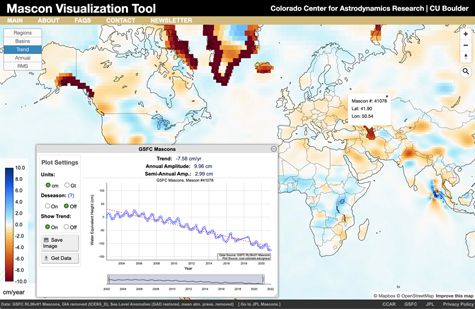
Credit: Mike Croteau
What skills are most useful to you in your work, and where did you develop those skills?
In addition to understanding both orbits and surface mass change, some other essential skills in my research include least squares estimation and linear algebra. I’ve always loved math (probably like most people here?), but I credit my professors at CU Boulder and my colleagues here at NASA GSFC with helping me continuously learn and improve in those areas. The other skill that I take pride in is data visualization. We do a lot of great science here, but I believe that it’s equally important that we do a good job communicating our science. The way we visualize data can make a big difference in how we can convey our findings and share our work with the science community, and I think it is important that we continuously improve our visualization strategies and find tools and platforms that help us communicate our work. Fortunately, my thesis advisor was very supportive of that idea, and his encouragement is partly to credit for me building enough Javascript knowledge to build an online tool still in use today for visualizing and exploring GRACE data, the Mascon Visualization Tool (see picture above).
What does a typical day at work look like for you?
I spend a lot of time in front of a computer screen! I think in an ideal world, my day would be a balance of algorithm development, testing improvements to our gravity and sea level capabilities, investigating science appications of our work, coding, and reading/writing journal articles. In reality, some days are very busy with meetings and I hardly even look at code, while other days I get lost in Jupyter notebooks for nearly the entire day. Over the past couple years, I’ve gotten involved in a number of committees (such as NASA Goddard’s Early/Mid-Career Council (EMC2) and the Science Directors Committee), so I also spend varying amounts of time on those depending on the month.
What are your future research interests and goals?
I’d like to help our lab continue to grow our capabilities in gravimetry and altimetry, and ideally see myself as a person with one foot in each. We have some of the world’s top experts in each field, and it looks like both gravity and altimetry missions will continue to be flown and expanded moving forward. Our lab is heavily involved in the mission planning for the next gravity mission (and the one after that!) and I’d like to step up into larger leadership roles within the lab and the science community with each of those missions.
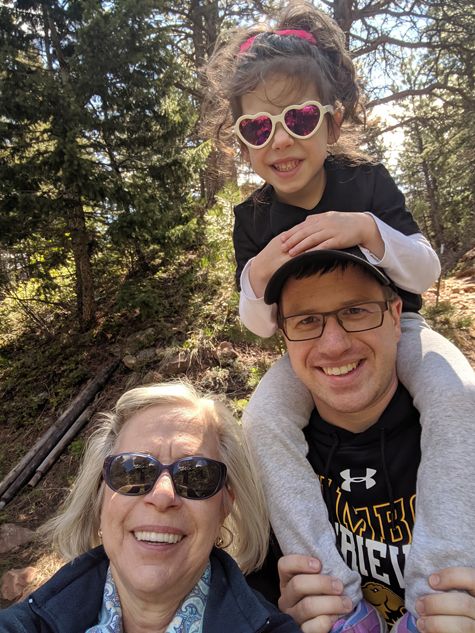
Credit: Marcia Croteau
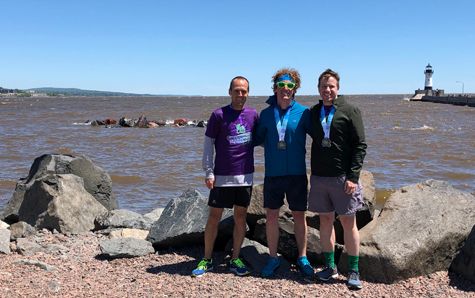
Credit: Allison Dean
What is a fun fact about you?
While I was in grad school, I also hosted a niche tech podcast for roughly a year. As I got deeper into my thesis, I wanted to spend my limited free time running, hiking, and generally away from computer screens and ended the show. It was the right decision, though it was also difficult to do as I was averaging well over 2,000 listeners with my final episode passing 10,000! The best part was that over the course of that year I was able to talk with some really talented people from around the world, including South Africa, Hong Kong, many parts of Europe, and across the US.
Biography
Home Town:
Ellicott City, MD
Undergraduate Degree:
BS Aerospace Engineering, University of Notre Dame, South Bend IN
Post-graduate Degrees:
MEd, University of Notre Dame, South Bend IN
MS & PhD Aerospace Engineering Sciences, University of Colorado Boulder, Boulder CO
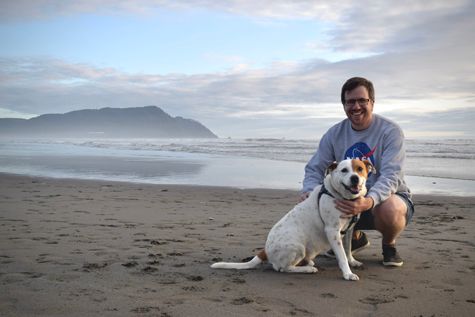
Link to Dr. Croteau's GSFC Bio
